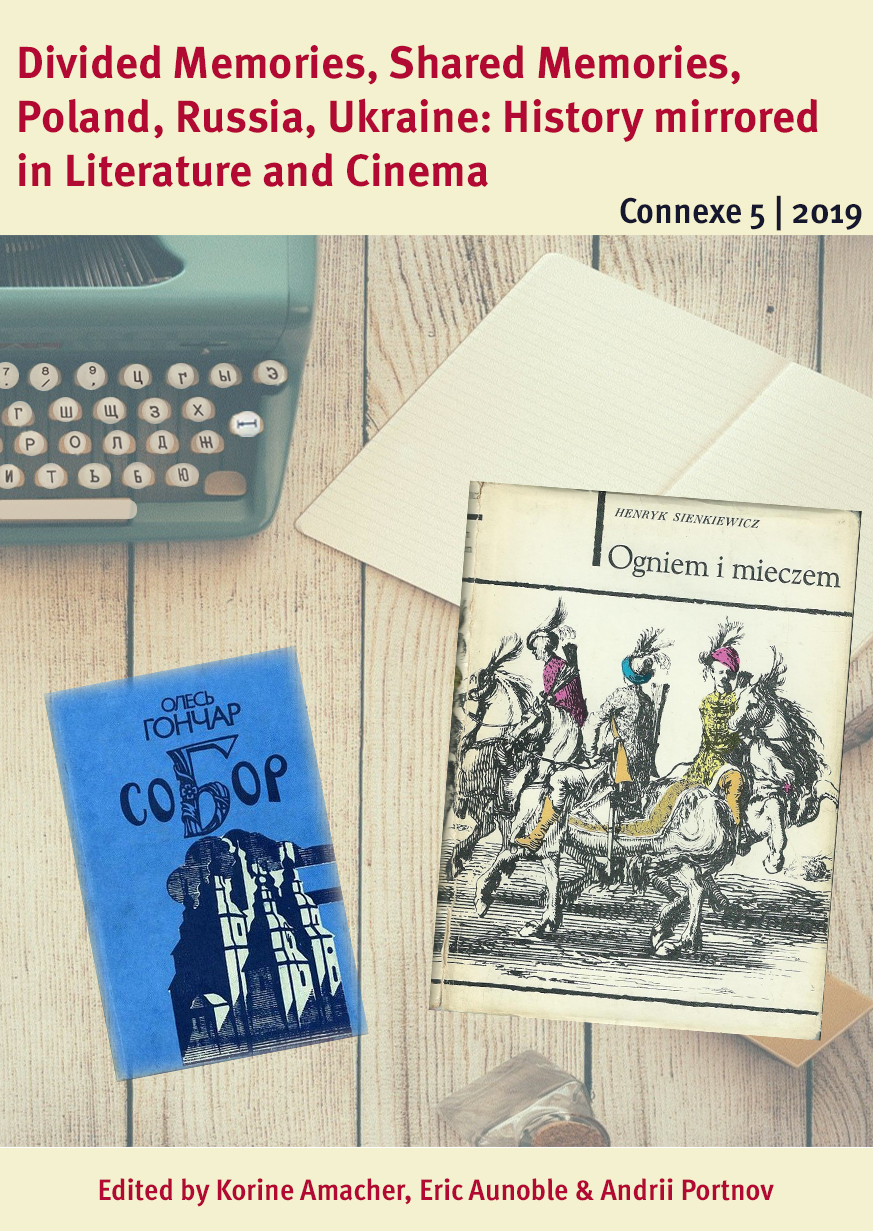On German Orders. The Volhynian Massacre in Soviet Partisans’ Memoirs
DOI:
https://doi.org/10.5077/journals/connexe.2019.e253Keywords:
The Volhynian Massacre, Ukrainian nationalism, war memoirs, the “Great Patriotic War,” Soviet propaganda, Soviet partisansAbstract
This paper is devoted to the analysis of the narrative displayed to the mass Soviet reader of the anti-Polish ethnic cleansing conducted by Ukrainian nationalists in 1943 in Volhynia. The sources used in this paper include the most widely published books of partisan commanders who were active in the region. These texts are examined as sources aimed to shape public opinion about the Ukrainian nationalists after the war. For the Soviet public, the memoirs of Soviet partisans operating in North-West Ukraine in 1943–1944 along with propagandist anti-nationalist literature were the main source of information about the Volhynian Massacre. In these books, the stories about the massacre appear, above all, to be a propaganda tool. The comparison of the depictions of the Volhynian Massacre provided by partisan authors with modern scholarly works shows us intentional distortions by the former. It may perhaps seem paradoxical to note that the partisan memoirists, who tended to discredit the Ukrainian nationalists, preferred to blame them only as perpetrators, but not as the initiators of the anti-Polish massacres in Volhynia. The anti-Polish “actions” were described primarily as a direct initiative of German occupational authorities, whereas the detachments of nationalists’ organisations were portrayed as its faithful executors. The memoirists stressed the disinterestedness and unwillingness of ordinary Ukrainian peasants to participate in the massacres and the alienation of its organizers from the broad masses of working people. In this light, the Soviet partisan memoirs give us little help in understanding the Volhynian massacre itself but serve as an excellent example of Soviet propaganda efforts aimed at modelling representations of the past.
References
Machcewicz, Pawel. 2005. “The Institute of National Remembrance and Coming to Terms with a Difficult Past: World War II and the Communist Dictatorship.” InterMarium 3(8): 1–10. http://ece.columbia.edu/files/ece/images/machcewicz.pdf.
McBride, Jared. 2016. “Peasants into Perpetrators: The OUN-UPA and the Ethnic Cleansing of Volhynia, 1943–1944.” Slavic Review 3(75): 630–654.
Motyka, Grzegorz. 2016. “Zbrodnia wołyńska 1943 roku i mit buntu ludowego.” Dzieje najnowsze XLVIII: 53–66.
Portnov, Andrii. 2016. Clash of Victimhoods. The Volhynian Massacre 1943 in Polish and Ukrainian Memory. https://www.opendemocracy.net/od-russia/andrii-portnov/clash-ofvictimhood-1943-volhynian-massacre-in-polish-and-ukrainian-culture.
Shatalov, Denys. 2018. “Non-nipped Memory. The Holocaust in the Soviet War Memoirs.” Проблеми історії Голокосту 10: 127–188.
Siemaszko, Władysław, and Ewa Siemaszko. 2008. Ludobójstwo dokonane przez nacjonalistów ukraińskich na ludności polskiej Wołynia 1939–1945, t. 1–2. Warszawa: Wydawnictwo von borowiecky.
Snyder, Timothy. 2003. “The Causes of Ukrainian–Polish Ethnic Cleansing 1943.” Past and Present 1(179): 197–234.
Бакрадзе, Давид. 1961. Кровью героев. Тбилиси: Заря Востока.
Бринский, Антон. 1966. По ту сторону фронта. Горький: Волго-Вятское книжное издательство, книга 1. https://royallib.com/book/brinskiy_anton/po_tu_storonu_fronta.html.
В’ятрович, Володимир. 2011. Друга польсько-українська війна, 1942–1947. Київ: Видавничій дім “Києво-Могилянська академія.”
Вершигора, Пëтр. 1947. Люди с чистой совестью. Москва: Воениздат.
Вершигора, Пëтр. 1950. Люди с чистой совестью (Карпатский рейд). Москва: Московский рабочий.
Вершигора, Пëтр. 1990. Люди с чистой совестью. Киев: Политиздат Украины.
Вершигора, Пëтр. 1960. Рейд на Сан и Вислу. Москва: Воениздат.
Грицьків, Роман. 2003. “Польська історіографія українсько-польського збройного конфлікту часів Другої світової війни.” Український визвольний рух 2, 148–169. Львів: Інститут українознавства ім. І. Крип’якевича НАН України.
Ільюшин, Ігор. 2003. Волинська трагедія 1943–1944. Київ: [б. в.]
Ковальчук, Михайло, та Олександр Вовк. 2009. “Підполковник армії УНР, генерал-хорунжий УПА Леонід Ступницький: сторінки біографії.” Військово-історичний альманах 1(18): 4–40.
Літопис УПА. Нова серія. 2010. УПА і запілля на ПЗУЗ 1943–1945, t. 14. Київ-Торонто [б.в.]
Мотика, Ґжеґож. 2013. Від Волинської різанини до операції “Вісла”: польсько-український конфлікт 1943–1947. Київ: Дух і Літера.
Наумов, Михаил. 1953. Хинельские походы. Ленинград: Ленинградское газетно-журнальное и книжное издательство.
Новак, Терентий. 1966. Пароль знают немногие. Москва: Воениздат.
Осипян, Александр. 2004. “Этнические чистки и чистка памти: украинско-польское пограничье 1939–1947 гг. в современной политике и историографии.” Ab Imperio 2: 297–328.
Успенский, Владимир. 1993. Тайный советник вождя. Москва: Прометей.
Подпольный обком действует: Книги 1–3. 1955. Москва: Воениздат http://militera.lib.ru/memo/russian/Fёdorov_af1/index.html.
Фёдоров, Алексей. 1985. Последняя зима. Москва: Воениздат.
Фёдоров, Олексій. 1981. Підпільний обком діє. Київ: Видавництво політичної літератури України.
Downloads
Published
How to Cite
Issue
Section
License
Some rights reserved 2020 Denys Shatalov

This work is licensed under a Creative Commons Attribution 4.0 International License.




